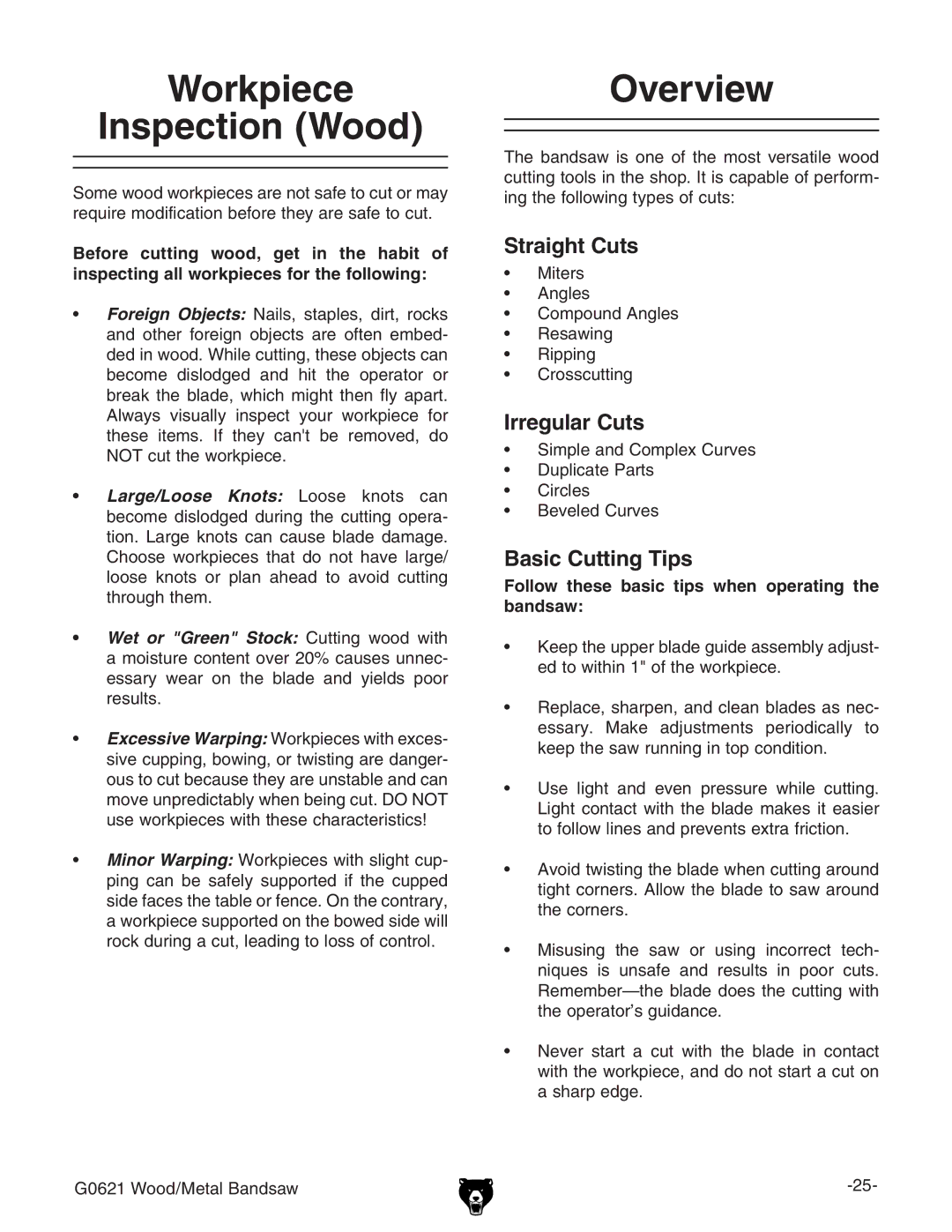
Workpiece
Inspection (Wood)
Some wood workpieces are not safe to cut or may require modification before they are safe to cut.
Before cutting wood, get in the habit of inspecting all workpieces for the following:
•Foreign Objects: Nails, staples, dirt, rocks and other foreign objects are often embed- ded in wood. While cutting, these objects can become dislodged and hit the operator or break the blade, which might then fly apart. Always visually inspect your workpiece for these items. If they can't be removed, do NOT cut the workpiece.
•Large/Loose Knots: Loose knots can become dislodged during the cutting opera- tion. Large knots can cause blade damage. Choose workpieces that do not have large/ loose knots or plan ahead to avoid cutting through them.
•Wet or "Green" Stock: Cutting wood with a moisture content over 20% causes unnec- essary wear on the blade and yields poor results.
•Excessive Warping: Workpieces with exces- sive cupping, bowing, or twisting are danger- ous to cut because they are unstable and can move unpredictably when being cut. DO NOT use workpieces with these characteristics!
•Minor Warping: Workpieces with slight cup- ping can be safely supported if the cupped side faces the table or fence. On the contrary, a workpiece supported on the bowed side will rock during a cut, leading to loss of control.
G0621 Wood/Metal Bandsaw
Overview
The bandsaw is one of the most versatile wood cutting tools in the shop. It is capable of perform- ing the following types of cuts:
Straight Cuts
•Miters
•Angles
•Compound Angles
•Resawing
•Ripping
•Crosscutting
Irregular Cuts
•Simple and Complex Curves
•Duplicate Parts
•Circles
•Beveled Curves
Basic Cutting Tips
Follow these basic tips when operating the bandsaw:
•Keep the upper blade guide assembly adjust- ed to within 1" of the workpiece.
•Replace, sharpen, and clean blades as nec- essary. Make adjustments periodically to keep the saw running in top condition.
•Use light and even pressure while cutting. Light contact with the blade makes it easier to follow lines and prevents extra friction.
•Avoid twisting the blade when cutting around tight corners. Allow the blade to saw around the corners.
•Misusing the saw or using incorrect tech- niques is unsafe and results in poor cuts.
•Never start a cut with the blade in contact with the workpiece, and do not start a cut on a sharp edge.
